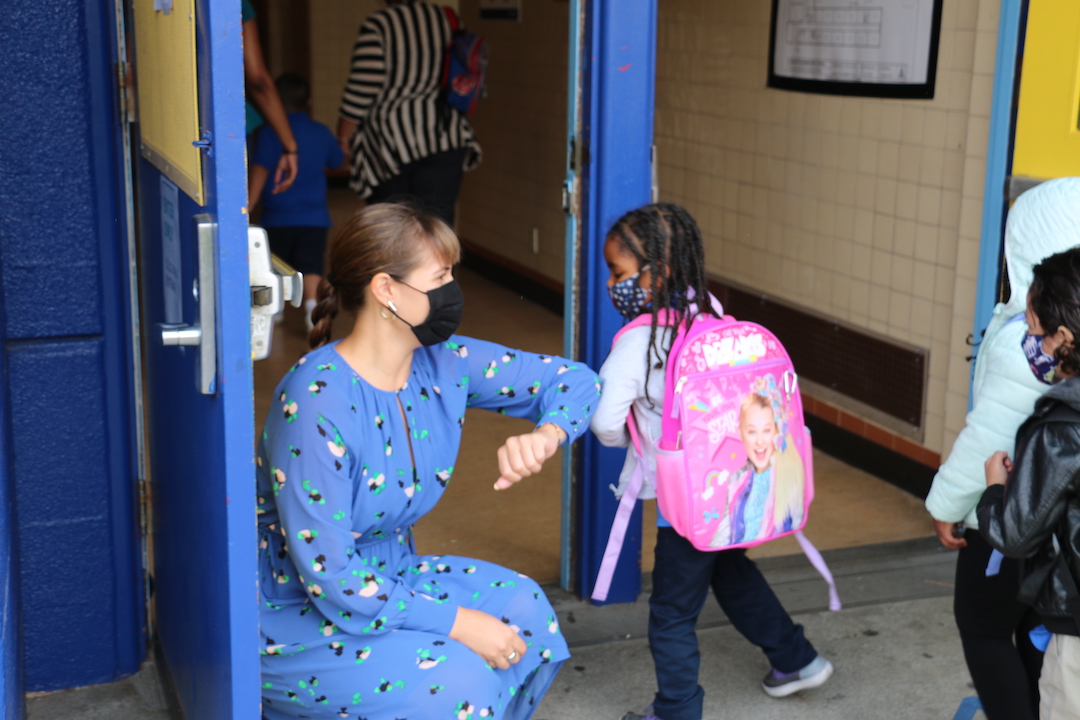KIPP Northern California COVID-19 Prevention Plan
Our students, families, and teachers are the heart and soul of KIPP, and our top priority is their health and safety. KIPP Northern California will continue to monitor state and county health rates and comply with all federal, state and local health & safety guidelines as it relates to the safety and security of our team, families and community.
KIPP Northern California follows guidance from the Centers for Disease Control (CDC), the California Department of Public Health (CDPH) and our local public health agencies. Our layered prevention strategy uses a combination of individual and school-based levers to reduce the risk of COVID-19 on campus and help keep our community healthy and safe.

KIPP Northern California is applying layers of proven strategies to reduce the risk of COVID-19 on campus.

Prevention Strategies
COVID Response
KIPP follows the latest public health guidelines on isolation, quarantine, and contact tracing. All students and staff who test positive for COVID-19 must immediately report it to their school and/or manager, and isolate at home for 5-10 days.
KIPP’s Regional COVID Response team will send full isolation instructions to individuals who test positive. The COVID Response team will also conduct contact tracing and send notifications to the individuals or classrooms who may have been exposed with guidelines on testing and masking. There is no at-home quarantine required after exposure — your child may continue to come to school.
Surge Readiness
During periods of high community transmission, KIPP schools may increase safety measures including required masking and broader testing. Students may be encouraged to use upgraded masks, such as surgical masks, or take a rapid test at home. KIPP maintains a central stockpile of KN95 masks and rapid antigen tests, in addition to school-based supplies, to ensure we are ready to respond to a surge.
What to do if your child…
Your school can support your child with an at-home rapid antigen test if one is needed. You can also access free testing through your healthcare provider and local community options.
TESTS POSITIVE FOR COVID-19:
- Inform your school right away. They will need to know (1) the date your child’s symptoms began, if any, and (2) the date they tested positive.
- Your school will report the positive case to our Regional COVID Response team. Our COVID Response team will send you full isolation instructions in ParentSquare.
- Your child will need to isolate for up to 10 days. Isolation may be shortened by following the instruction provided in ParentSquare – take a rapid antigen test on the correct day.
- If they test negative: Share the result with your school and your child may be cleared to end isolation early. If so, your child must wear a mask at school through Day 10.
- If they test positive: Your child must continue to isolate at home. You can repeat testing each day through Day 10 to see if they are eligible to end isolation early.
- After Day 10, and if your child has been fever-free for at least 24 hours without the use of medication, their isolation is complete. They do not need to test again to return to campus.
HAS COVID- RELATED SYMPTOMS:
Per the CDC, the most common COVID-19 symptoms include:
| Fever or Chills | Cough | Difficulty Breathing | Fatigue |
| Muscle or Body Aches | Headache | New Loss of Taste or Smell* | Sore Throat |
| Nausea or Vomiting | Diarrhea | Congestion or Runny Nose** | |
*Children may complain that food tastes “bad” or “funny”
**When in combination with other symptoms
If your child has any of these symptoms:
- Test them immediately using a rapid antigen test.
- If your child feels well enough to come to school, they must test negative, and be fever-free for 24 hours without the use of medication, to be on campus.
- If they do not feel well enough to come to school, please let your school know that they will be absent.
- Have your child wear a mask around others at school until their symptoms resolve.
- Test again 1-2 days later to confirm a negative result. Repeat testing is important, as the virus can build up in their system over the first few days and your child’s result may change.
- If your child tests positive at any time, see instructions above.
WAS EXPOSED TO SOMEONE WITH COVID:
- There are no longer any requirements to quarantine at home after exposure to someone with COVID — your child may continue to come to school.
- Have your child wear a mask around others at school for 10 days following their exposure, and monitor for any symptoms.
- Testing is strongly recommended immediately after learning of the exposure, and again 3-5 days after the exposure.
- NOTE: If the positive case lives in your household, isolate your child away from them as much as is feasible. If together, all individuals should wear high quality masks. Test your child frequently (every 2-3 days) during this person’s isolation, and a final time 2-3 days after their isolation is complete.
- If your child develops COVID symptoms or tests positive at any time, see instructions above.
